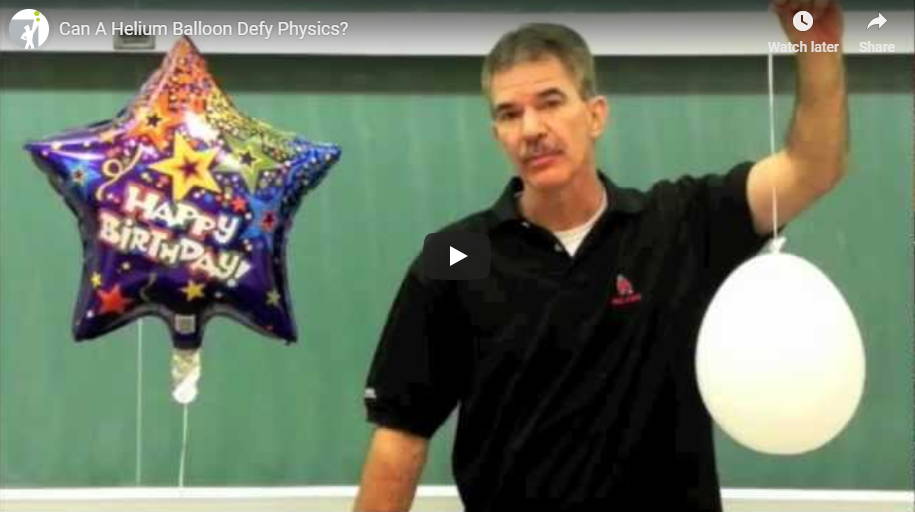Featured Products
Watch this video and it almost seems like this balloon's actions are counter-intuitive to everything we know about motion and inertia. Let Professor Joel Bryan from Ball State University explain what is really going on.
Ask any student what happens when they are riding in a car and the car makes a sharp left turn, they'll probably tell you that they, and everything else in the car that is not tightly secured, will be "thrown" to the right. Similarly, when the car turns sharply to the right, everything tends to be "thrown" to the left. They also probably know by experience that objects and passengers in the car keep moving forward when the car comes to a sudden stop – which is why seatbelts are required – and get "thrown" backward when the car suddenly accelerates forward. Science teachers frequently use these examples in discussions of Newton's laws of motion, as well as addressing the widely held misconception that there is a "centrifugal" force that pushes the objects outward. If already in motion, the inertia of an object in the car tends to make it continue moving forward – regardless of how the car turns or changes speed. When accelerating the car from rest or some other constant speed, inertia tends to make an object in the car remain at rest or remain at its initial speed.
When students enter your classroom armed with these firsthand experiences, they may not at all be surprised by the video clips showing the direction an air-filled balloon hanging from the ceiling of a van swings when the car makes sharp turns to the left and right. However, they will likely be quite surprised to view the video clips of the motion of a helium-filled balloon inside a moving van as the van turns to the right and turns to the left.
The air–filled balloon hanging from the ceiling of the van behaved exactly as most would expect. The balloon swung to the left when the van turned right, swung right when the van turned left, swung backward when the van accelerated forward from rest, and swung forward when the van came slowed to an abrupt stop. This motion is easily explained using inertia and Newton's first law of motion.
However, the helium-filled balloon that was attached to the floor of the van surprisingly moved opposite to the direction of the air-filled balloon. It swung to the right when the van turned to the right, swung to the left when the van turned left, swung forward when the van accelerated forward, and swung backward when the van accelerated backward (slowed abruptly to a stop).
One may initially think that this is a violation of Newton's first law of motion, but the first law not only holds true, it is also useful in explaining the balloon's behavior. When the van turned sharply to the left, air molecules inside the van continued moving forward and effectively were "thrown" to the right side of the van. This resulted in a greater density of air molecules on the right side of the van than on the left side of the van. The greater density of air molecules on the right side of the van created a buoyant force that pushed the lighter than air helium balloon from the greater density right side toward the lower density left side of the van. For similar reasons, the helium balloon swung to the right when the van turned sharply right. Once students understand this explanation, they should be able to predict and explain the movement of helium and air–filled balloons when the van speeds up and when it slows down.


